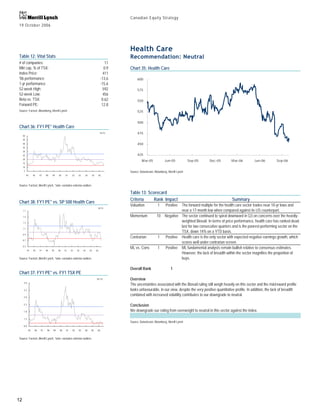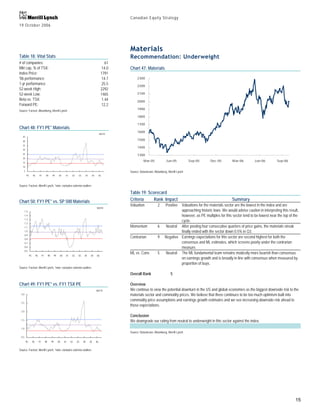Merrill Lynch provides an overview of their Canadian equity strategy and outlook. They maintain a cautious outlook on the overall market and preference for defensive sectors. They expect Canadian GDP growth to slow from 2.9% in 2006 to 2.3% in 2007, weighing on corporate earnings. Their analysis suggests TSX earnings per share growth may contract in 2007 rather than the 13% consensus growth. Foreign and domestic investors may also shift away from Canadian stocks due to weaker resource sectors and the Canadian dollar, putting downward pressure on valuations.


















